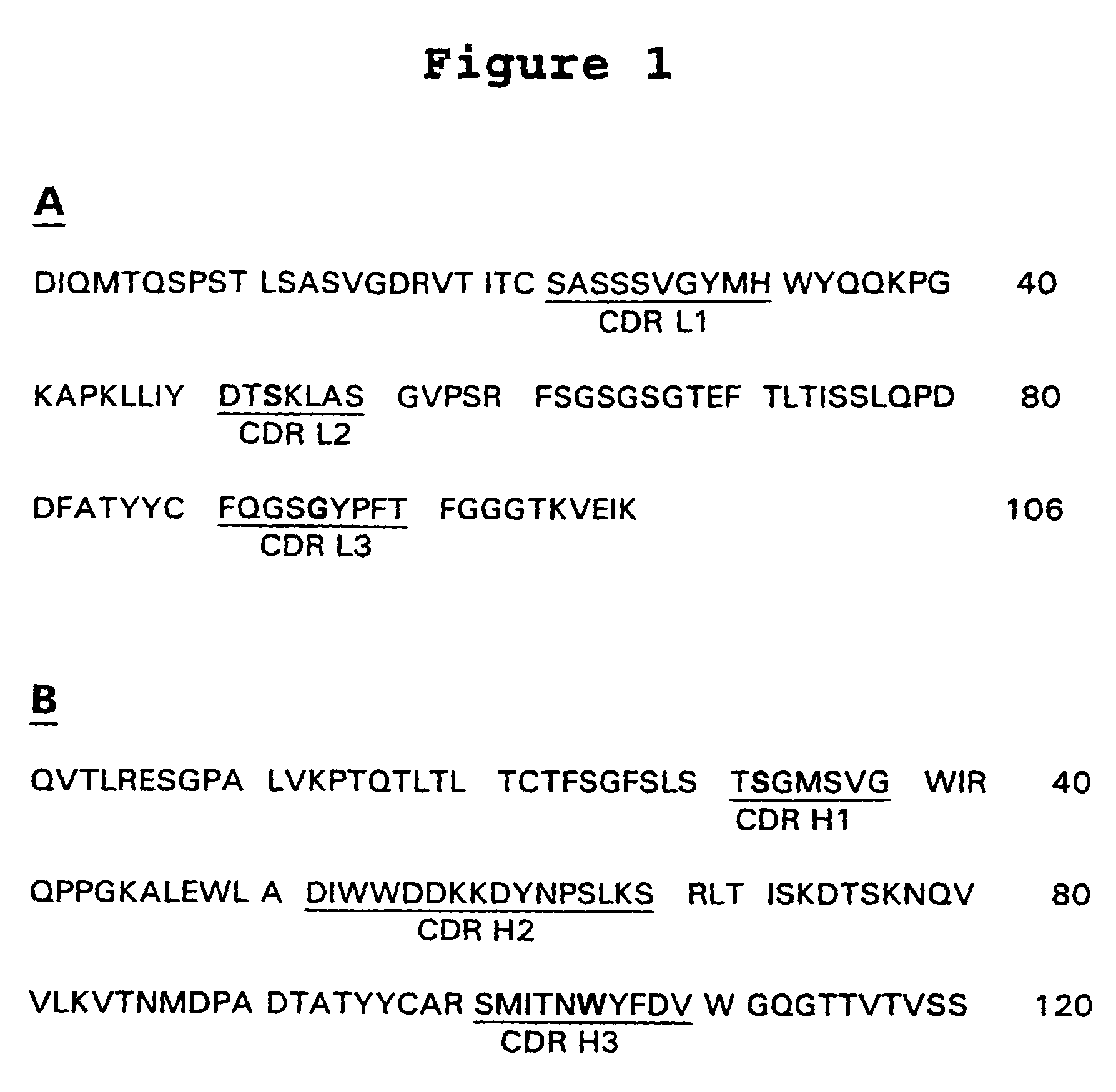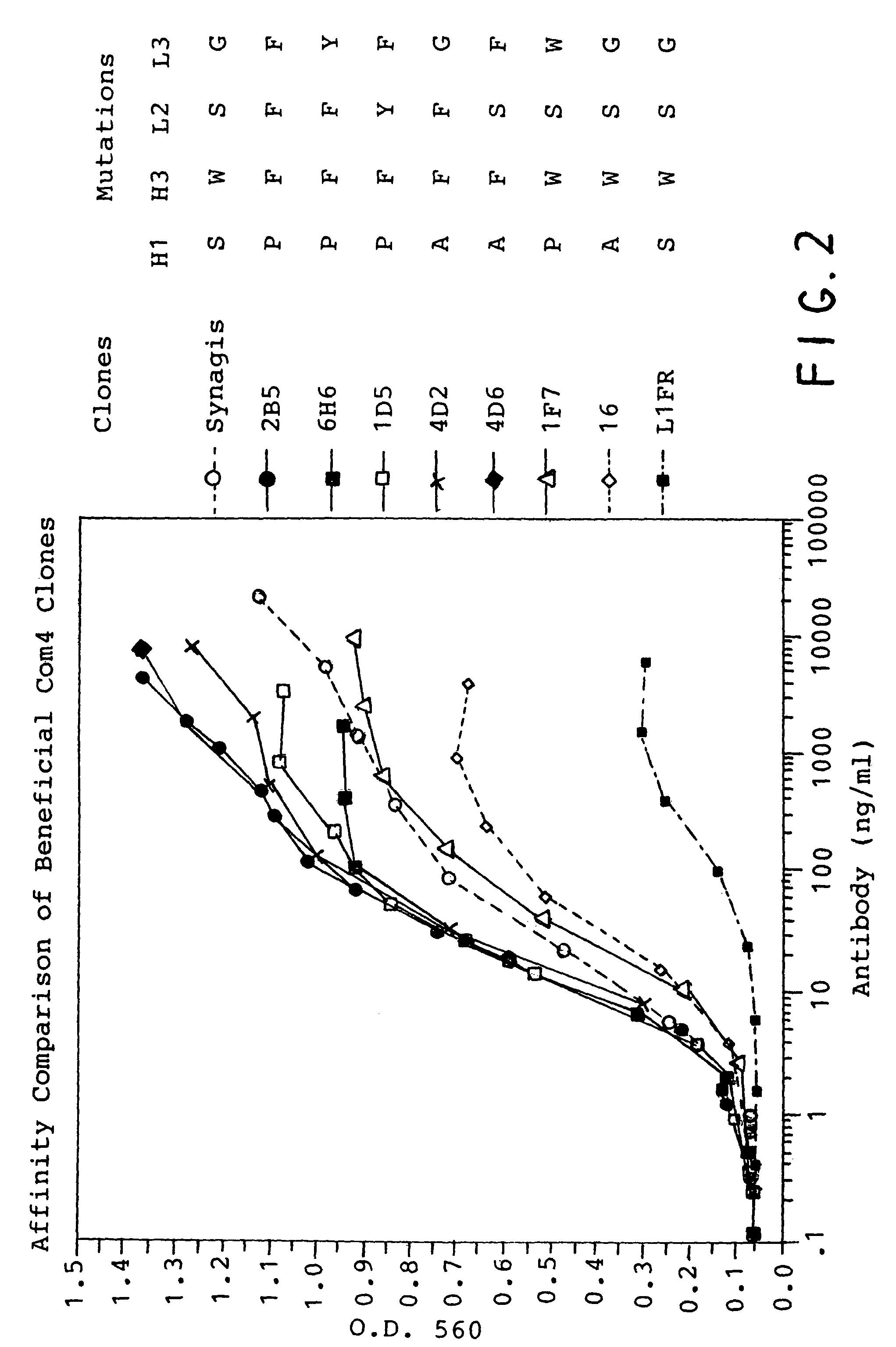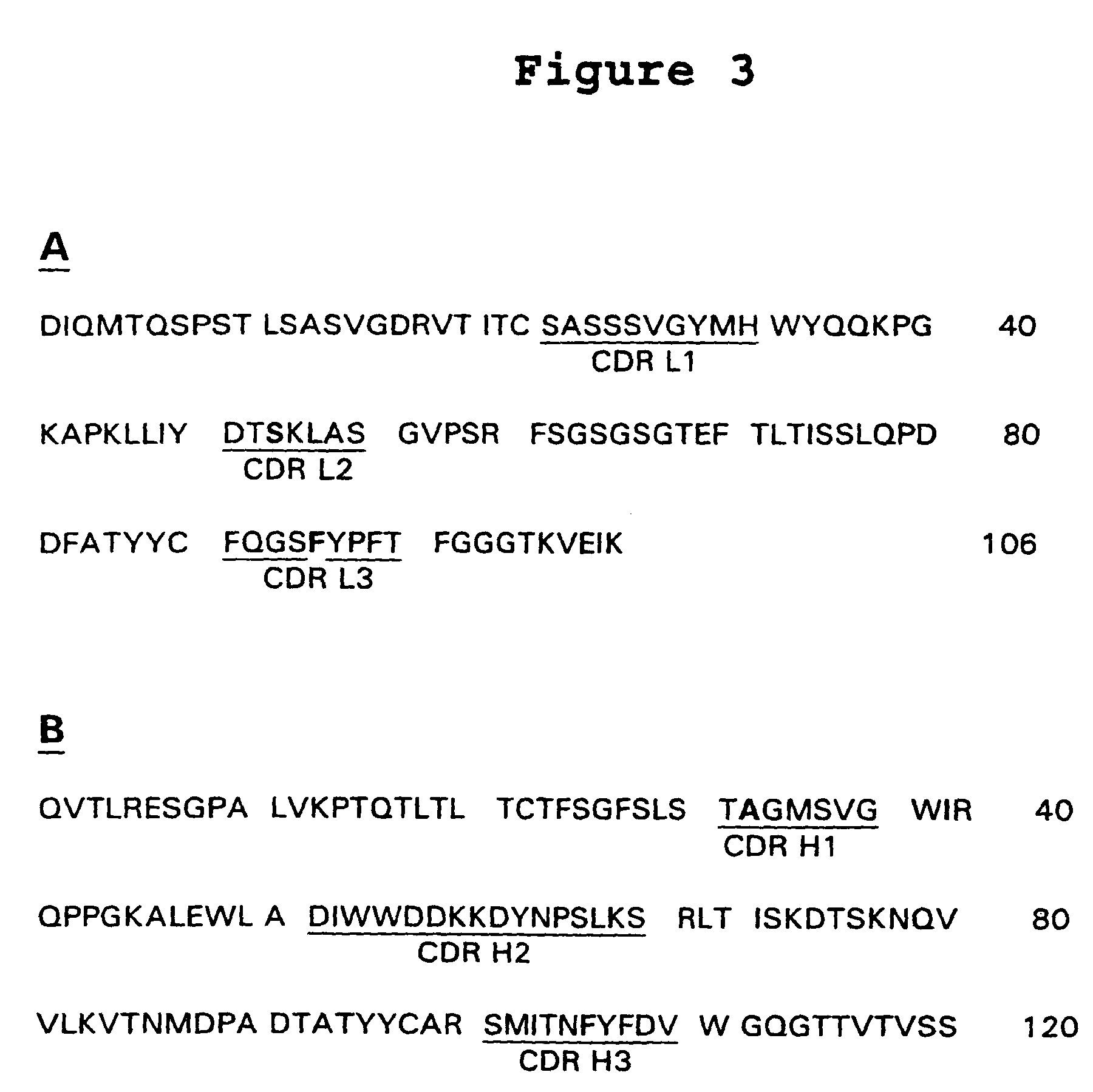Ultra high affinity neutralizing antibodies
a technology of ultra-high affinity and neutralizing antibodies, applied in the field of ultra-high affinity neutralizing antibodies, can solve the problems of rsv safety, further immune pathology, mixed effectiveness, etc., and achieve the effect of reducing cost and efficacy of overall production and high affinity neutralizing activity
- Summary
- Abstract
- Description
- Claims
- Application Information
AI Technical Summary
Benefits of technology
Problems solved by technology
Method used
Image
Examples
example 1
Kinetic Analysis of Humanized RSV Mabs by BIAcore™
[0115]The kinetics of interaction between high affinity anti-RSV Mabs and the RSV F protein was studied by surface plasmon resonance using a Pharmacia BIAcore™ biosensor. A recombinant baculovirus expressing a C-terminal truncated F protein provided an abundant source of antigen for kinetic studies. The supernatant, which contained the secreted F protein, was enriched approximately 20-fold by successive chromatography on concanavalin A and Q-sepharose columns. The pooled fractions were dialyzed against 10 mM sodium citrate (pH 5.5), and concentrated to approximately 0.1 mg / ml. In a typical experiment, an aliquot of the F-protein (100 ml) was amine-coupled to the BIAcore sensor chip. The amount immobilized gave approximately 2000 response units (Rmax) of signal when saturated with the mouse monoclonal antibodies H1129 or H1308F (prepared as in U.S. Pat. No. 5,824,307, whose disclosure is hereby incorporated by reference). This indicat...
example 2
Microneutralization Assay
[0124]Neutralization of the antibodies of the present invention were determined by microneutralization assay. This microneutralization assay is a modification of the procedures described by Anderson et al (1985). Antibody dilutions were made in triplicate using a 96-well plate. Ten TCID50 of respiratory syncytial virus (RSV—Long strain) were incubated with serial dilutions of the antibody (or Fabs) to be tested for 2 hours at 37° C. in the wells of a 96-well plate. RSV susceptible HEp-2 cells (2.5×104) were then added to each well and cultured for 5 days at 37° C. in 5% CO2. After 5 days, the medium was aspirated and cells were washed and fixed to the plates with 80% methanol and 20% PBS. RSV replication was then determined by F protein expression. Fixed cells were incubated with a biotin-conjugated anti-F protein monoclonal antibody (pan F protein, C-site-specific MAb 133-1H) washed and horseradish peroxidase conjugated avidin was added to the wells. The we...
PUM
| Property | Measurement | Unit |
|---|---|---|
| dissociation constant | aaaaa | aaaaa |
| dissociation constant | aaaaa | aaaaa |
| dissociation constant | aaaaa | aaaaa |
Abstract
Description
Claims
Application Information
 Login to View More
Login to View More - R&D
- Intellectual Property
- Life Sciences
- Materials
- Tech Scout
- Unparalleled Data Quality
- Higher Quality Content
- 60% Fewer Hallucinations
Browse by: Latest US Patents, China's latest patents, Technical Efficacy Thesaurus, Application Domain, Technology Topic, Popular Technical Reports.
© 2025 PatSnap. All rights reserved.Legal|Privacy policy|Modern Slavery Act Transparency Statement|Sitemap|About US| Contact US: help@patsnap.com



